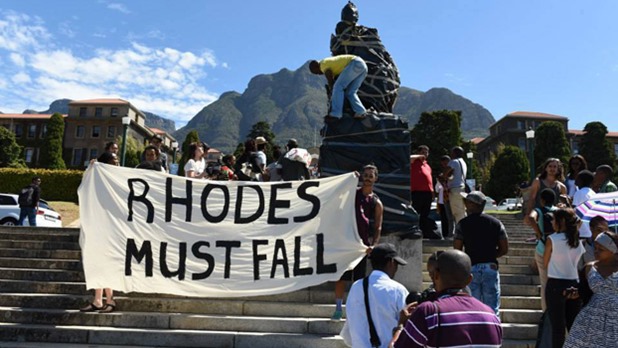Washington Post
April 3, 2015

It began with a container of excrement.
On March 9, a South African student protester tossed feces on a statue of British colonialist Cecil John Rhodes at the University of Cape Town, igniting nationwide calls to remove other statues of former white leaders. A statue of Britain’s King George V on a University of KwaZulu-Natal campus was splattered with white paint. Some activists want a statue of Paul Kruger, a white Boer leader in the late 19th century, to be shifted from a central square in Pretoria, the capital, to a museum.
The uproar is part of a larger discourse about change in South Africa, where the legacy of apartheid, the white minority rule that ended two decades ago, is often blamed for economic inequality, a struggling education system and other problems.
Mthunzi Mthimkhulu, a technology consultant and former student at the University of Cape Town, stood Saturday near the Rhodes statue, which had been wrapped in black garbage bags by protesters. Obscene graffiti covered the pedestal.
“We don’t need reminders of where we came from. We know our struggles,” he said. “What we need is things that will take us forward.”

By Sunday, the Rhodes statue was boarded up, its days apparently numbered. University Vice-Chancellor Max Price, who is white, described Rhodes as a “villain” and said the statue should be moved. Rhodes, who died in 1902, was “a kind of colonial warlord” and “ardent segregationist” who made a fortune in mining and grabbed land from the local population, said Paul Maylam, a history professor at Rhodes University in the South African city of Grahamstown. Rhodes was also associated with education and philanthropy, partly because of scholarships that carry his name, Maylam said.

